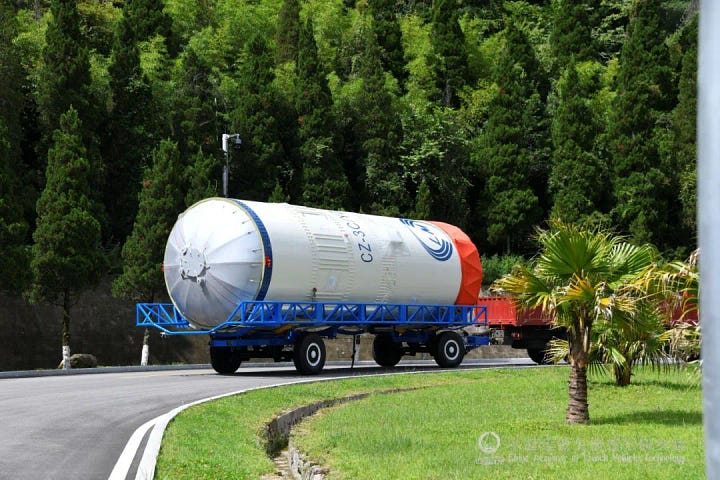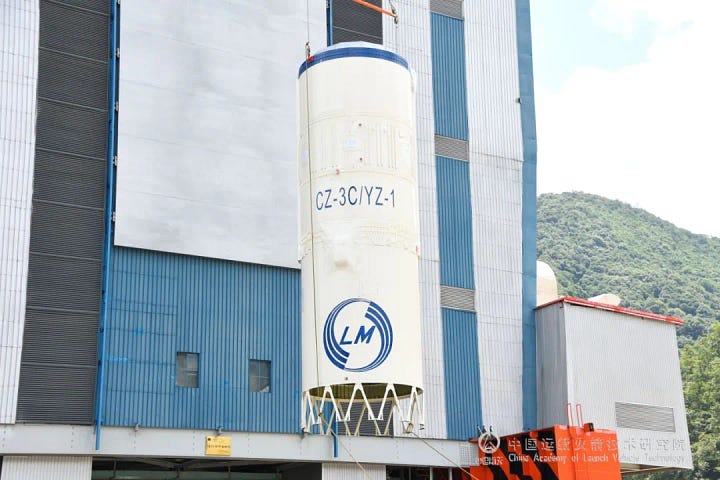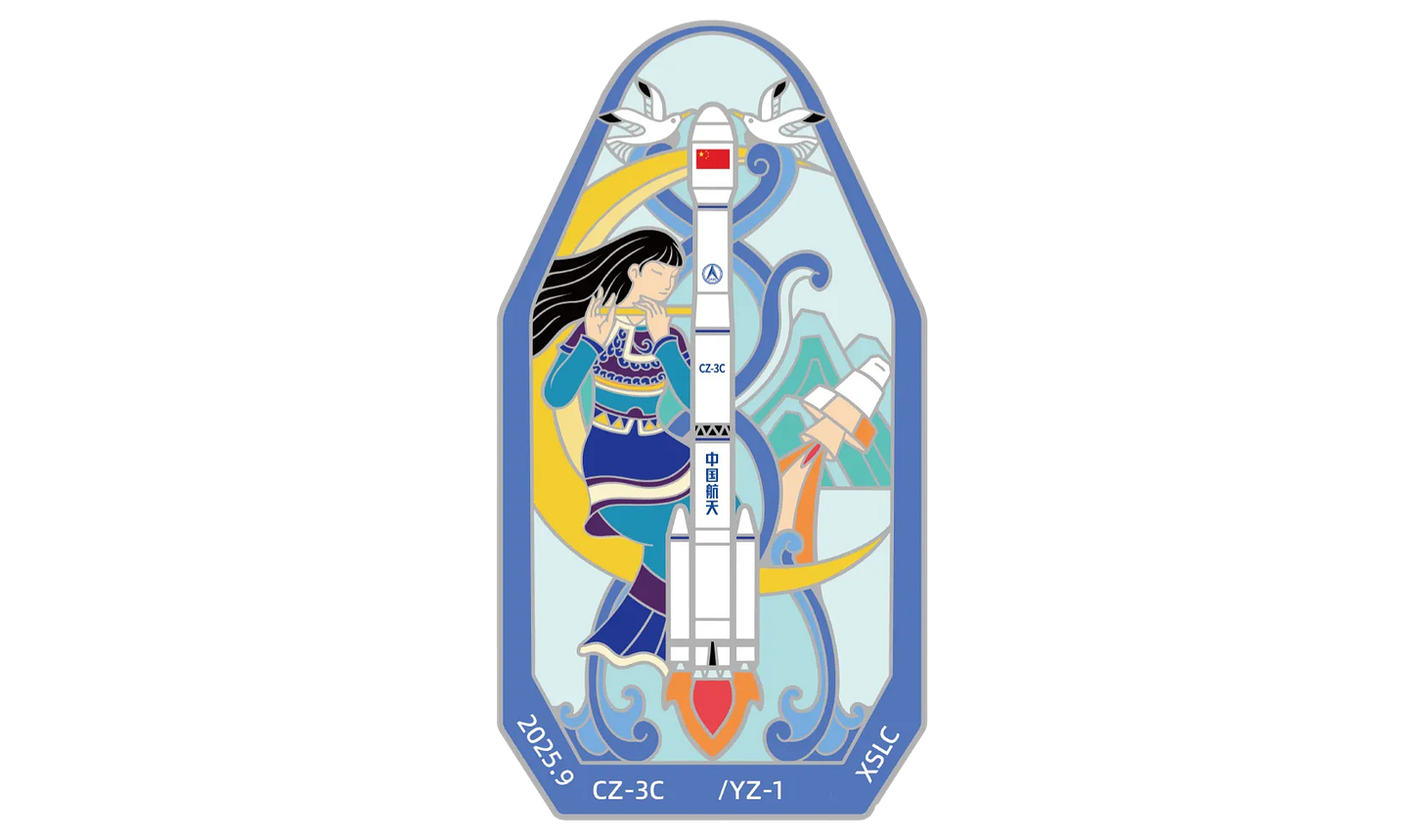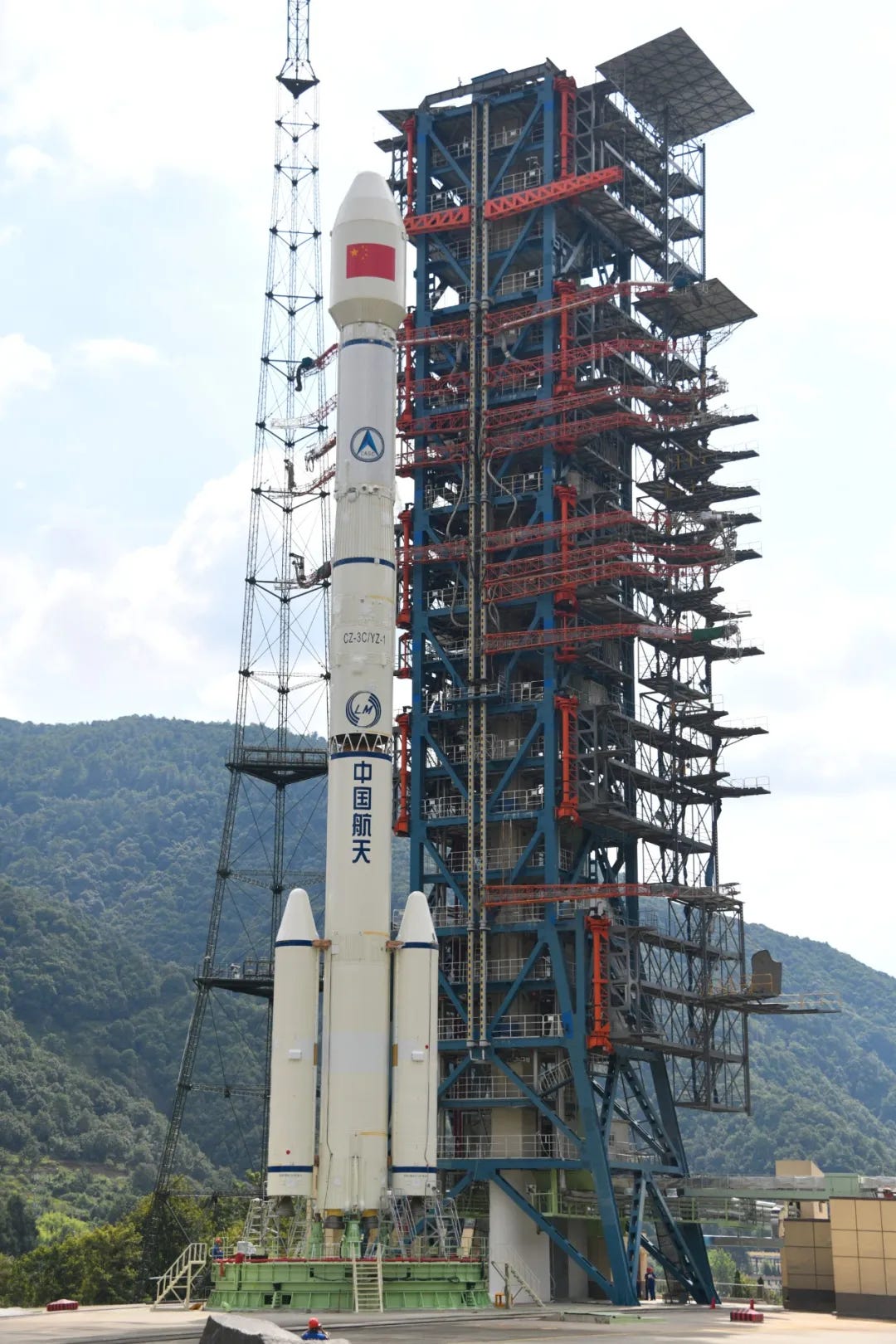New Test Satellite Launched From Xichang [Long March 3C/E/YZ-1]
And the Long March 3A series is on track to hit its 2025 target.
From the Xichang Satellite Launch Center on September 5th, a Long March 3C lifted off from Launch Complex 2 at 10:34 am China Standard Time (02:34 am Universal Coordinated Time) heading for geostationary space directly. Atop the rocket was a single satellite.
That sole satellite was Shiyan-29 (试验二十九号), said to be for space environment monitoring and related technology tests. The Innovation Academy for Microsatellites, Chinese Academy of Sciences (中国科学院微小卫星创新研究院) contributed to this spacecraft, based on deleted words from a pre-launch blog post.
The Shiyan (试验) satellite designation is used for technology development spacecraft, and the name literally translates to test or experiment. Shijian (实践) is a similar designation for more mature technology tests.
Helping deliver today’s payload toward its intended orbit was a Yuanzheng-1 upper-stage, for its eighteenth mission. Yuanzheng (远征) upper-stages are used as an optional extra stage for most of the Long March launch vehicles for delivering satellites into higher orbits than a rocket is capable of or to deploy multiple satellites into various orbits.
Meanwhile on the rocket, new-generation general-purpose ground measurement and control systems were integrated onto the launch vehicle, which allows for less equipment needed at the launch site, following extensive testing. Additional weather-proofing measures and inspections were also installed and carried out during the launch campaign to combat Xichang’s rainy season.
Two Long March 3C/E’s have flown so far this year, along with nine Long March 3B/E’s (which the rocket is a derivative of, both are part of the 3A series too), all successfully. Toward the end of 2024, the China Academy of Launch Vehicle Technology boasted that they were aiming to launch the Long March 3A series over a dozen times as part of a period of high-frequency launches. With the current launch rate, they are on track to hit that target, assuming the Long March 3B/E or 3C/E fly once every month for the remainder of the year.
Today’s mission was the 20th launch of a Long March 3C vehicle, and the 592nd launch of the Long March launch vehicle series. This was also the 51st launch from China in 2025.
Liftoff video via 航天五线谱 on Weibo.
Check out the previous Long March 3C/E launch
Fourth Heavenly King for TJSW-19 [Long March 3C/E]
From Launch Complex 3 at the Xichang Satellite Launch Center, a Long March 3C blasted off at 02:09 am China Standard Time on May 13th (18:09 pm Universal Coordinated Time on May 12th). Atop of the first Long March 3C/E in almost four years was a single satell…
What is the Long March 3C/E?
This section is for those less familiar with China's Long March series of launch vehicles.
The Long March 3C is the less capable derivative of the Long March 3B designed by the China Academy of Launch Vehicle Technology to be a cheaper offering for customers who don't have a satellite heavy enough for a more capable vehicle. The first two stages and two boosters of the rocket burn Dinitrogen Tetroxide and Unsymmetrical Dimethylhydrazine, with liquid hydrogen and liquid oxygen in the third-stage.
Over the rocket's almost sixteen-year launch history, two versions of the vehicle have flown, the 3C and 3C/E. Since 2016 only the 3C/E variant has flown due to its increased payload capacity. The payload capacity of the launch vehicle is currently as follows:
8,000 kilograms to low Earth orbit
3,900 kilograms into a geostationary transfer orbit
The first-stage is powered by four YF-21C engines that burn Dinitrogen Tetroxide and Unsymmetrical Dimethylhydrazine to generate 302 tons of thrust, while the boosters are powered by one YF-25 engine burning the same fuel to generate 72 tons of thrust each. Combined, the two boosters and first stage generate a thrust of 446 tons. The second stage is powered by one YF-22E and four YF-23F vernier engines that also burn Dinitrogen Tetroxide and Unsymmetrical Dimethylhydrazine to generate 81 tons of thrust. The third-stage is powered by two YF-75 engines that burn liquid hydrogen and liquid oxygen to generate 17 tons of thrust.
On the launch pad, the Long March 3B/E is 55.6 meters tall and weighs 345,000 kilograms when fully fuelled. The first and second-stage have a diameter of 3.35 meters, while the third-stage has a diameter of 3 meters, along with the two boosters' diameter of 2.25 meters, and the fairing has a diameter of 4.2 meters.
So far, every Long March 3C launch has occurred from the Xichang Satellite Launch Center, in the south of Sichuan province.







![Fourth Heavenly King for TJSW-19 [Long March 3C/E]](https://substackcdn.com/image/fetch/$s_!dakX!,w_1300,h_650,c_fill,f_auto,q_auto:good,fl_progressive:steep,g_auto/https%3A%2F%2Fsubstack-post-media.s3.amazonaws.com%2Fpublic%2Fimages%2F0692c036-c36f-4312-b38e-af47bb85209c_1148x630.jpeg)
